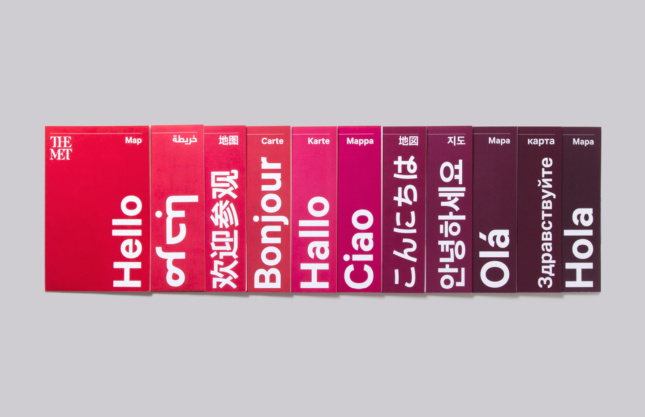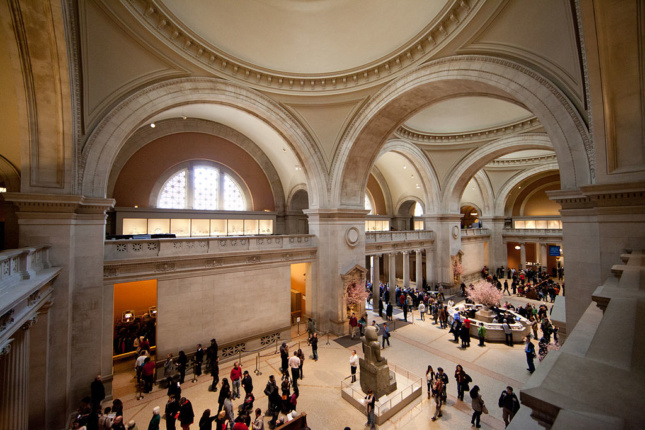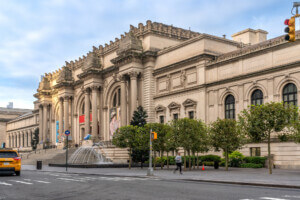The new year has kicked off with the news of the Metropolitan Museum of Art changing its admission policy. Instead of a voluntary contribution, any adult without a New York State proof of residence will have to pay the full price of $25, with few exceptions.
I used to work at the Met as an exhibition designer. Well aware of the financial troubles of the institution, I participated in brainstorming sessions among the departments to think of ways to generate revenue from visitors without adding a non-negotiable admission fee.
I was working at the Met when it rebranded itself under the tagline of being “open” and trying to be more accessible “for everyone.” The museum spent millions of dollars on a new identity and logo geared towards appealing to a broader public and getting rid of its elitist image. In this vein, the question of admission is not merely a financial one–it is a design and visitor experience problem.

Ironically, the decision to charge selective admission fees will affect exactly the people the museum is trying to reach through expensive outreach and education programs. From a design standpoint, the visitor journey into the museum is now a divided one, with financial and psychological barriers to entry for those who are least likely to come. By drawing a line based on people’s ability to afford rent within the five boroughs, the Met is revealing its own contradictory nature. It wants to be exclusive and sophisticated, while still “for everyone.”
Even for locals who would technically be able to enter, the policy presents a deterring tactic. New Yorkers who lack proper documentation, including those without legal status, are affected, as are commuters who work in the city every day but live in a nearby state. It also excludes family and friends who visit their New York-based relatives on a budget and might not be able to afford what the Met leadership considers a “fair” price.

This is not the only instance of the paradoxical spending priorities at the Met. The Met Gala swallows millions while the exhibitions department can’t afford necessary equipment. The cafeteria increased rates on subprime food the same year nobody got a raise. The museum was planning a $600-million-dollar expansion while not updating the completely antiquated signage in the Great Hall. Seen this way, the new ticketing policy is just the tip of the iceberg of irrational financial decisions.
From a financial standpoint, the new admissions policy also entails a number of hidden costs. It makes the ticketing and admission process more expensive because of the added time needed for ID-checking and negotiating. New signage and way-finding needs to be designed and installed to explain the new policy to visitors. The Great Hall needs to be re-organized with new stanchioning to address the two-tier system.
While tickets are one way of generating revenue, there are other ways to raise money from visitors while keeping admissions fees voluntary. They are all connected to a perceived value of the visit for one-off visitors and to a sense of identification for returning ones. This is where design can play a critical role in helping people understand that their contribution is actually valuable to the museum.
The visitor journey starts with the online presence of the Met, and continues as people enter the museum and wait in line for their ticket. There are currently six ticketing booths at the Met, with long lines in front of the coat check and the sprawling retail store tucked in the corner. Because of confusing signage, people return to the Great Hall multiple times per visit to re-orient themselves, adding to the crowded feeling. A reorganization of the Great Hall is long overdue and could drive revenue with more effective ticket processing times combined with nudges towards retail and hospitality opportunities. Clear messaging and signage, open retail displays and optimized ticketing are all ways to make the visitor experience better and drive revenue at the same time.
While the Met has discussed and tried to implement some of these ideas in the past years, the measures cannot be implemented simultaneously, so it is hard to measure their collective impact. Secondly, the internal priorities of different stakeholders make it hard to proceed in a unified and consistent direction. Perhaps the Met could start seeing the phased rollout as an advantage, where each measure can be fine-tuned and evaluated before final implementation.
One hidden motivation behind the policy may have been to actually decrease the number of total visitors to address overcrowding. The argument goes that more people will end up coming who truly appreciate the Met, as the visit is something of value since it has a price tag. However, looking at the Museum of Modern Art (MoMA), which charges a mandatory admission fee of $25, the new policy is not likely to change the number of visitors significantly, just the make-up of the crowd. For that reason, the Met needs to evaluate beyond just numbers, and understand how the changed policy affects who can visit and who is kept out.
While argued as a economic necessity, the Met’s decision to abolish free entrance for everyone but those with the right identification is designed to exclude society’s weakest. It is not a coincidence that the measure was put in place in absence of a director. One can only hope that the new director will recognize the opportunity to roll back this exclusionary policy. At a time when the political climate is hostile to the values forwarded by museums and cultural public institutions, it is vital that the Met’s mission of openness and access is actually put into practice.











